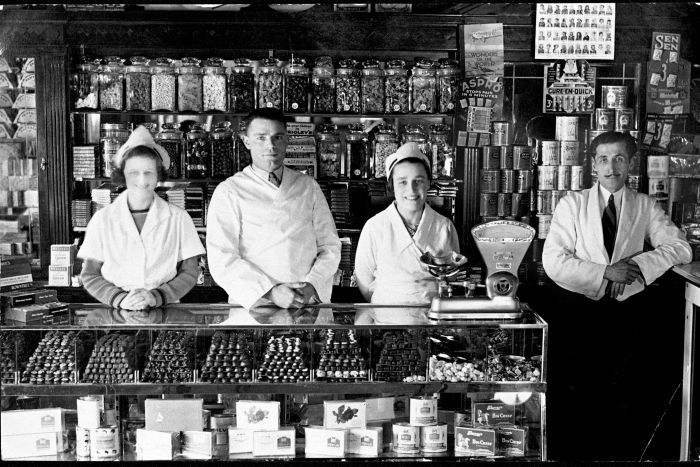From the Paragon Cafe in Katoomba to the Olympia Milk Bar in Stanmore. All are iconic food establishments in the history of Greek Australians. In fact, they’re so memorable that to this day, years after many have closed down or are under different ownership, they are still spoken about.
One such instance was during a special online event called ‘Greek Australian Milk Bars and Cafes: Past and Present,’ held today by NSW Public Libraries at 12.30pm.
Guest speaker at the event was Macquarie University historian and co-author of Greek Cafes and Milk Bars in Australia, Leonard Janiszewski. He provided some valuable insights into how the Greek establishments came to be and what their future looks like.
READ MORE: Vasili’s Taxidi: Growing Up in Inner City Milk Bars: The Mascotte Milk Bar, Petersham.

Mr Janiszewski described how once Australia’s first milk bar opened in Martin Place, Sydney in 1932, people queued in their thousands for a taste of America.
“They were successful because they were using American products like ice cream, but there was also that Greek influence in terms of social engagement,” Mr Janiszewski said during the event.
“The Greeks also knew they could rely on their family for help. Family became the nucleus of success.”
Over time, Greek Australian milk bars and cafes spread across Australia, until there were over 4000 registered in the country. Many continued serving what they knew best – milkshakes and mixed grills – while others tried branching out into Greek cuisine as well.
READ MORE: ‘Brisbane’s Greek Cafe’s’: The tales of Queensland’s old Greek cafes & milk bars come back to life.

“It worked for some but generally speaking, not many of the cafes or milk bars had Greek food. The British and Australians saw it as ‘peasant food’ because they typically ate steaks and eggs,” Mr Janiszewski explained.
From there, the discussion moved into the future of Greek Australian cafes and milk bars, as well as the factors leading to their demise in the first place.
Mr Janiszewski said one of the factors was that the establishments were not meant for second and third generation Greek Australians.
“The establishments provided a foothold for second and third generation Greek Australians to get a good education and become professionals,” the historian said.
READ MORE: Effy Alexakis’ photo exhibition on Greek Australians to be displayed in Athens.

“Economically they were also changing due to the mechanisation of agriculture, picture theatres were being challenged by television and there was the corporatisation of fast food, with the introduction of KFC, Burger King, and more.”
Some Greek Australians have tried to revive the institutions through ‘nostalgia cafes, Mr Janiszewski said, but ‘it’s very difficult.’
“They can’t exist on nostalgia alone. From what I’ve seen, it’s very difficult. They need to provide a sustainable economic program… and give something special to the community.”
A sombre warning for Greek Australian cafes and milk bars, but one we should acknowledge to ensure the history of these iconic establishments is never forgotten.
READ MORE: Debut book by Andrew Pippos shines new light on Greek Australian cafés.
